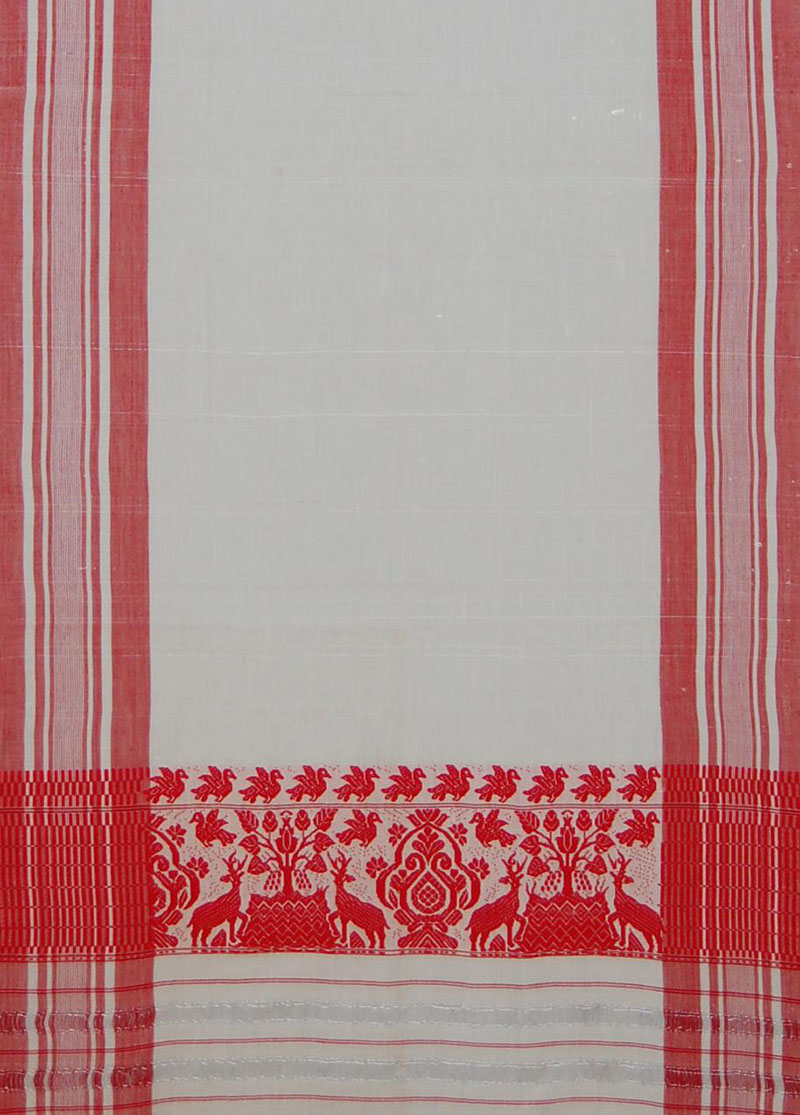A rectangular, handwoven piece of cotton fabric also known as gamucha, gamcha or gamocha, the gamusa is a culturally significant cloth from Assam. The name gamusa comes from the Assamese words ga, meaning “body,” and musa, meaning to “wipe,” though the gamusa itself has several functions beyond being used as a towel. Approximately 122 x 61 cm in size, a traditional gamusa is woven from white cotton, and occasionally pat silk (or mulberry) and features naturalistic or geometric motifs in red along three of its sides. Other accounts ascribe the origins of the word to the Kamrupi word gaamasa, which refers to the cloth used to cover the Bhagavata Purana in a place of worship (yet another use of the modern day gamusa).
Scholars are divided on the geographical origins of the gamusa. While some believe that it originated from within Assam and was popularised by the Ahom people, an ethnic group of Northeast India, others believe that its origins may lie in Thailand, where a similar, smaller cloth is found.
Broadly, the gamusa can be divided into two categories. The first is the uka, or the plain gamusa, which are used as an everyday cloth. An example of this is the pani gamusa, which is coarser in texture and used by agricultural workers to wipe down their bodies. The second category of gamusa is the phulam, which comprises those decorated with floral motifs and used during formal occasions or festivals. This includes the tamul gamusa, the bihuwan and the anakata gamusa to name a few. The tamul is the cloth on which betel nut is traditionally served to visitors in a household, and it is also used to cover the holy scriptures in a prayer hall. The bihuwaan is a formal gamusa gifted to guests for Bihu and, lastly, the anakata is another formal gamusa gifted during special events such as a marriage or a birthday. During Bihu, it is also worn around the waist by male dancers, and is used to cover the instruments played during the festival, such as the dhol and the khol.
In 2019, the gamusa was recognised with a Geographical Indication (GI) tag. The nine types of gamusa included under it are: uka gamosa, phulam gamosa, bihuwan, tioni gamosa, pani gamosa, anakota gamosa, telos gamosa, jor gamosa and xadharon gamosa.







